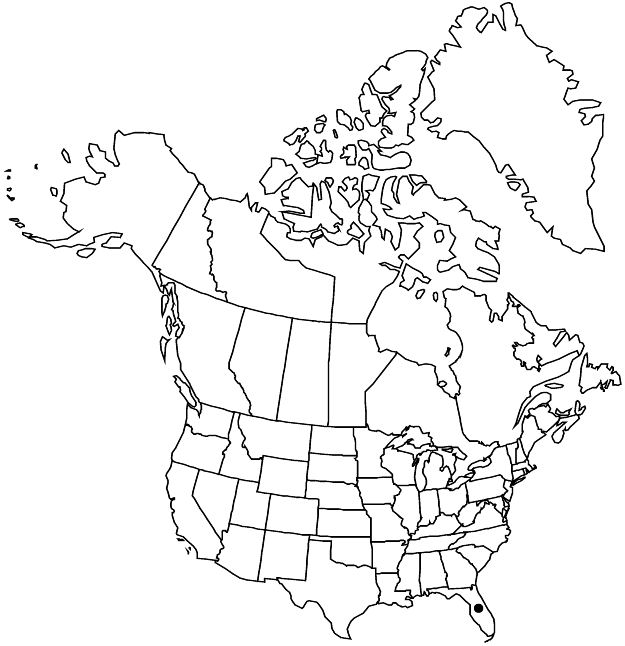Phyllanthus pentaphyllus
Nachr. Königl. Ges. Wiss. Georg-Augusts-Univ. 1865: 167. 1865.
Herbs, perennial, with woody caudex, dioecious or monoecious, often staminate and pistillate flowers on separate branchlets, 0.5–3 dm; branching phyllanthoid. Stems: main-stems and ultimate branchlets terete, not winged, usually glabrous, rarely scabridulous. Leaves on main-stems spiral, scalelike; stipules auriculate, dark-brown. Leaves on ultimate branchlets distichous, well developed; stipules not auriculate, pale-brown to brown; blade elliptic or obovate to suborbiculate, 2–8 × 1–5 mm, base acute to rounded, apex obtuse to rounded and apiculate, both surfaces glabrous or abaxial scabridulous. Inflorescences cymules or flowers solitary, unisexual, staminate distributed along branchlet, with (10–) 15–20 flowers, pistillate distributed along branchlet or distal, with 1 flower. Pedicels: staminate 0.3–0.8 mm, pistillate spreading in fruit, (1–) 1.2–1.8 (–2.1) mm. Staminate flowers: sepals 5, pale-yellow to white, flat, 0.7–0.8 mm; nectary extrastaminal, 5 glands; stamens 2, filaments connate 2/3 length. Pistillate flowers: sepals 5, green with broad white margins, flat, (0.7–) 0.9–1.2 mm, obscurely veined; nectary annular, 5-lobed. Capsules 1.7–1.9 mm diam., smooth. Seeds uniformly brown, 0.8–0.9 mm, longitudinally ribbed. 2n = 52.
Phenology: Flowering and fruiting year-round.
Habitat: Rocky pinelands on limestone.
Elevation: 0–10 m.
Distribution

Fla., West Indies (Bahamas), West Indies (Cuba), West Indies (Hispaniola)
Discussion
G. L. Webster (1955, 1970) treated the Florida plants of Phyllanthus pentaphyllus as var. floridanus, distinguishing them from those of the West Indies based on the former being dioecious or at least having branchlets that produce flowers of only one sex, and the latter being monoecious with each branchlet bearing both staminate and pistillate flowers. However, he acknowledged that dioecious individuals are found in Cuba and that the distinction between the varieties was weak (Webster 1955, 1956–58). Examination of additional specimens shows that plants with monoecious branchlets are not uncommon in Florida and that dioecious plants are found in both Cuba and the Bahamas; therefore, var. floridanus is not recognized here.
G. L. Webster (1955) treated Phyllanthus polycladus Urban of Puerto Rico and the Lesser Antilles as a subspecies of P. pentaphyllus. These taxa seem amply different in habit, leaf blade shape and texture, and pistillate nectary shape, and are here considered separate species.
Phyllanthus pentaphyllus in the flora area is restricted to Miami-Dade and Monroe counties, where its rocky pineland habitat is threatened by development. Variety floridanus, when recognized, is regarded as threatened.
Selected References
None.
Lower Taxa
"/3" is not declared as a valid unit of measurement for this property."dm" is not declared as a valid unit of measurement for this property."elongating" is not a number."connate" is not a number."/2" is not declared as a valid unit of measurement for this property.